Miles Williams Mathis: H. P. Lovecraft – Spook Baby

By David Kasady and Leaf Garrit
The wonder of science fiction is that it can, when given certain hypothetical world settings, turn what in our reality is evil and dark into what is righteous and bright, and vice versa. – Liu Cixin
I’d been researching Lovecraft for a few months before the fake Santa Fe school shooting.
santafe.pdf (mileswmathis.com)
In case you missed it, the media reported that 17-year-old “shooter” Dimitrios Pagourtzis was wearing a Cthulhu pin on his trench coat.
Dimitrios Pagourtzis: What we know about the alleged Santa Fe High School shooter | CNN
Trial for civil lawsuit filed by victims of Santa Fe High School shooting rescheduled for July | Texas Standard
Cthulhu is one of the best-known god-monsters in Lovecraft’s extensive mythology.
This is no careless detail, as we are about to see that Lovecraft was a member of all the same ruling families, we’ve encountered time and time again.
The Cthulhu pin was a signal among these families, a little tapping of the nose to mark the Santa Fe event as another project.
You might object out of the gate to my claim that Lovecraft was “one of them” by saying that Lovecraft’s fiction was totally ignored in his day, and he died poor and in relative obscurity.
Firstly, he didn’t die poor; they admit he came from a very wealthy family but claim they lost their fortune – a story we’ve heard over and over with these crypto-rulers.
It’s just their way of hiding the fact that all famous and successful people come from money and just keep getting richer.
Secondly, he was ignored in his own day because he deserved to be.
His writing is stilted, unnatural, and devoid of any feeling or character development.
It is just a bunch of cardboard people encountering half-baked conceptions of metaphysical terror and then going mad as a result.
That’s every short story he ever wrote, and I know because I’ve read most of them.
More importantly, despite being ignored in his lifetime and deserving to be ignored to this day, posthumously he has been surprisingly promoted.
Wikipedia even tells us that:
“He is now regarded as one of the most significant 20th-century authors in his genre.”
To be “regarded” as significant is one of those things where truth and the perception of the truth are virtually the same, which is convenient for Lovecraft’s promoters.
If they keep pushing him as a significant author, eventually he will be significant, but only because everyone keeps being told he is.
It’s just another way they mess with your mind.
Lovecraft was promoted in a big way with a recent film that Miles himself has reviewed, and in a way this paper is an addendum or complement to that paper.

I’m speaking of Ridley Scott’s Prometheus, which was heavily inspired by At the Mountains of Madness.
The film’s plotline follows Lovecraft’s story so closely that you could even say it’s based on it.
The screenwriters were just recycling one bit of Intel propaganda to create another.
At the Mountains of Madness is one of the few Lovecraftian tales that’s actually readable, but that doesn’t mean it’s devoid of the typical propaganda and mind-messing.
How Propaganda Works – Library of Rickandria
I’ll borrow Miles’ words from his deconstruction of Prometheus, which are equally applicable to its source material:
But what makes the film really disturbing as a piece of agitprop is its major thesis, which is much more than a passing suggestion.
That thesis is that we are monsters because our creators are little more than monsters themselves.
Scott takes us halfway across the galaxy to meet our maker, and he turns out to be a bald giant with hypertrophied muscles, who won’t even answer a single question.
As an “answer” to the big questions posed on the movie posters, we get an immediate beheading and the beating deaths of several crew members.
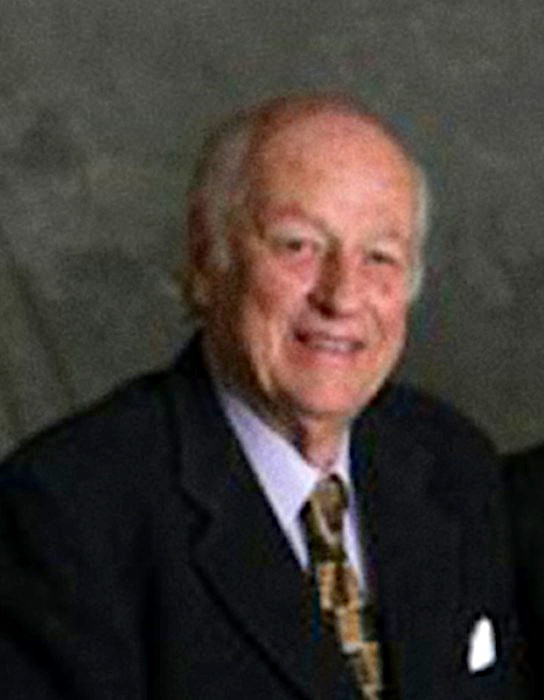
[Raymond Frederick Harryhausen (June 29, 1920 – May 7, 2013) was an American-British animator and special effects creator who created a form of stop motion model animation known as “Dynamation”. His works include the animation for Mighty Joe Young (1949) with his mentor Willis H. O’Brien (for which the latter won the Academy Award for Best Visual Effects); his first color film, The 7th Voyage of Sinbad (1958); and Jason and the Argonauts (1963), which featured a sword fight with seven skeleton warriors. His last film was Clash of the Titans (1981), after which he retired.]
God turns out to be a Ray Harryhausen cyclops of advanced technology, mute as a fish and compassionless as a worm.
Replace Scott with Lovecraft and you have the same thing:
a universe ultimately devoid of:
- meaning
- morality
- love
The horror/sci-f genre can be viewed as a precursor to Operation Chaos, since chaos and fear have always been the main objective of science fiction.
Nowhere is that more evident in Lovecraft’s writing.
The whole point of his Cthulhu mythos is to show that the universe is ultimately irrational and ruled by incomprehensible monsters that exist in other dimensions and who are, at best, ambivalent toward the humans they created.
To comprehend these horrific cosmic entities drives the human mind to insanity, so it’s best not to ask any big questions or pretend that there is ultimate truth.
Of course, to really believe such a thing would make life almost impossible to cope with, at least not without serious doses of antidepressants and lots of material comforts to distract and dull the mind.
And that’s exactly what the rulers want.
They want to turn us away from asking serious questions about how the world operates, since we would then discover that it is, in fact, ruled by monsters that are completely ambivalent to the human race.
Only, these monsters aren’t higher-dimensional, tentacled blobs of slime.
They’re just other humans whose minds are sick enough to think up such offensive creatures.
But all of that does not make Lovecraft one of them, you might say.
He could just be a useful dupe at this point, or just a deeply troubled nobody.
There are plenty of troubled nobodies in the world, after all.
But one look at Lovecraft’s life dispels this notion
To start, it helps to look at his initials, H.P. That stands for Howard Phillips.
Those aren’t first names, as you can tell from the plural Phillips.
They’re both family surnames, which means we already have two huge red flags staring us right in the face.
Both the Howard and Phillips families are very high up in the peerage.
Glossing H.P.’s genealogy, we find that he is not only a Howard and a Phillips, but also a:
- Lyons
- Morse
- Ball
and Pierce.
Frederick Aaron Lovecraft (1850-1893) | WikiTree FREE Family Tree
More red flags.
Miles:
Lyons links him to the current Queen of England, whose mother was a Bowes-Lyons.
Let’s hit on Phillips, which was his mother’s maiden name.
Does his Phillips line go back to the famous Dutch Philips, of Philips Electronics fame?
Geni.com takes us back to a Johane Houghton Phillips, whose husband is listed as “Phillips,” from London.
Johane Phillips (Houghton) (c.1552 – d.) – Genealogy (geni.com)
So that’s a dead end.
But if you follow Johane’s ancestors through her son Christopher, you find another Houghton – Dyna Phillips Houghton.
Dyna Houghton (Phillips) (1657 – 1738) – Genealogy (geni.com)
She would have been a distant aunt/cousin of Lovecraft.
I searched her name on Google and found this ancestry.com message board, where we read that Dyna’s father Zerubabel Phillips likely didn’t have any children, and that Dyna was really a Phillipse/Felypsen and was Dutch.
Message Boards (ancestry.com)
You’d think that means Dyna wasn’t related to Johane Phillips, Lovecraft’s ancestor, except for the fact that she married a Houghton.
If these are the same Houghtons, then odds are good the Phillips are also the same Phillips.
It turns out they are.
Dyna’s brother-in-law was Sir Gilbert Houghton, 2nd Baronet.
Johane’s father is listed on Geni.com as “Houghton” from Lancashire, England.
Guess where the Baronets de Houghton are from?
De Hoghton baronets – Wikipedia
Their family seat is Hoghton Tower, in Lancashire.
So, Dyna and Johane are linked to the same Houghtons, who are baronets.
It stands to reason then, that they are linked to the same Phillips, and that since Geni.com is misdirecting us in Dyna’s genealogy to the wrong Phillips, they are doing the same thing with Johane.
(And guess who is doing the misdirecting at Geni.com.
Our old friend Erica “the disconnectrix” Howton. Howton=Houghton.
She is one of the most active “curators” at Geni.)
This means the “P” in H.P. Lovecraft refers to the famous Jewish Philips of the Netherlands, relatives of Karl Marx.
Karl Marx – Library of Rickandria
So, Lovecraft was Jewish.
It also means Lovecraft was a direct descendent of the Baronets de Houghton.
These Houghtons are related to:
- Stuarts
- Cottons
- Molyneux
- Astons
and Wingfelds.
Keep that last name in your back pocket – we’re about to encounter it again.
Miles:
also notice Lovecraft’s jaw in upcoming pictures.
H.P. Lovecraft Photo Gallery (hplovecraft.com)
It is the famous Habsburg jaw.
‘Inbreeding Armageddon’ annihilated the Habsburg Dynasty – Library of Rickandria
Compare to King Philip IV of Spain.
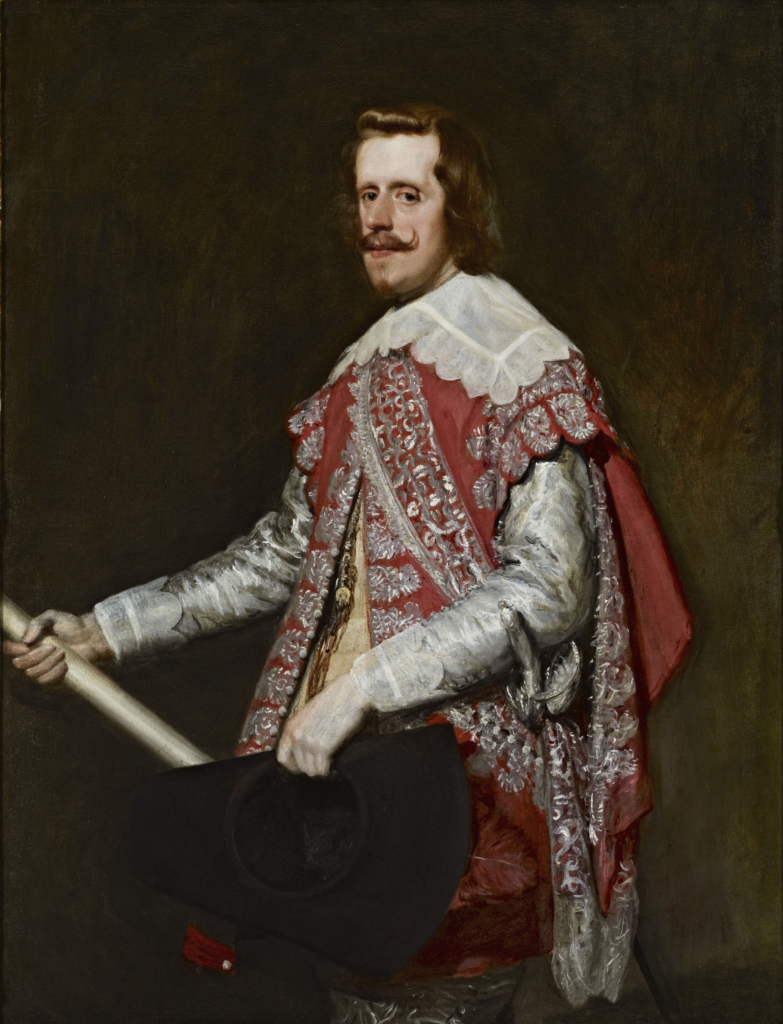
Lovecraft’s maternal grandfather was Whipple Van Buren Phillips, and his maternal aunt Lillian married a Franklin Chase Clark.
Wow, three big clues for the price of one there.
At hplovecraft.com, we find that Whipple:
“Was very active in Freemasonry.
Whipple Phillips owned much of the land in and around the town of Greene, Rhode Island, and founded Ionic Lodge No. 28 there in 1870.
The same webpage for some reason takes the time to categorically deny the theory that H.P. was a homosexual, providing as evidence the fact that his wife of two years, Sonia Greene, called him an “adequately excellent lover.”
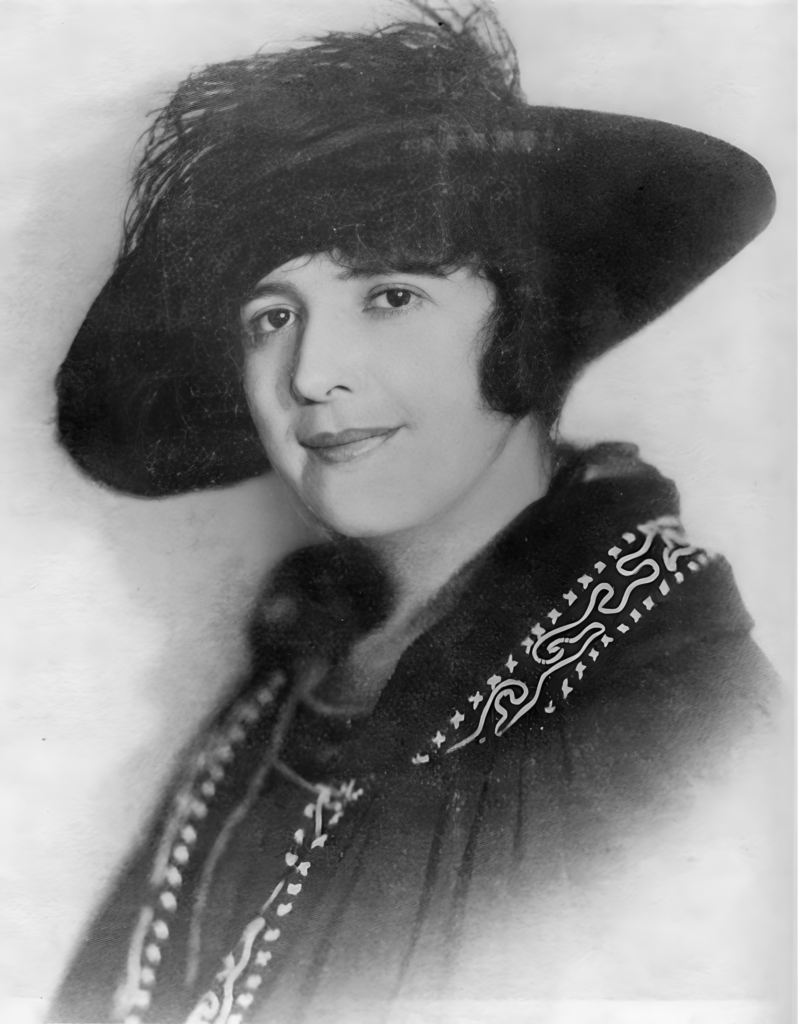
Give me a break.
No real person in a real relationship would call their lover “adequately excellent” in bed.
Given that silly story, Sonia was likely just a beard.
Beard (companion) – Wikipedia
It is also interesting that her first husband was a Greene, and Lovecraft’s grandfather Whipple owned much of the land around Greene, Rhode Island.
Coincidence?
You can decide for yourself.
Sonia later said that Lovecraft’s mother was a “touch-me-not wife”, and we may assume Sonia was the same—although the implication is that the mother was frigid, while Sonia was most likely gay herself, paired with Lovecraft for PR reasons.
A Hollywood marriage, in other words.
It is admitted she and Lovecraft lived separately from the beginning, and she left him in 1933.
Note the date.
Their relationship is rife with numerology markers, since they allegedly married on March 3, which is 3/3.
We are told Lovecraft never actually filed the divorce papers, and that she didn’t know that.
Right.
So, they were never legally divorced.
Were they ever legally married?
Speaking of Sonia, she immigrated to the US from either Russia or the Ukraine.
She was born Sonia Haft Shafrkin, daughter of Simyon and Racille.
“It is known that she did come from a Jewish family,” as Wikipedia admits.
The Jewish Hand Behind the Internet: Wikipedia – Library of Rickandria
This is interesting because we are told that Lovecraft was an anti-Semite.
Actually, Lovecraft tells us that himself when recollecting his experience growing up in the Jewish neighborhood of Providence:
But Hope Street (High School) is near enough to the ‘North End’ to have a considerable Jewish attendance.
Hope High School (Rhode Island) – Wikipedia
It was there that I formed my ineradicable aversion to the Semitic race.
The Jews were brilliant in their classes—calculatingly and scheming brilliant— but their ideals were sordid and their manners coarse.
I became rather well known as an anti-Semite before I had been at Hope Street many days.
For one thing, I bet you didn’t know Providence had a Jewish side of town.
Actually, Rhode Island has a long history of Jewish settlement going back to the 1600s, as detailed in this paper published by the Rhode Island Jewish Historical Association.
The Jews in Rhode Island: A Brief History (rijha.org)
Secondly, we should ask the obvious question:
if Lovecraft grew up in a Jewish neighborhood and went to a Jewish high school, and married a Jewish woman, is it possible he was also Jewish? (We’ve already established that he was.)
Thirdly, for being anti-Semitic, Lovecraft paints Jews in a subtly positive light, doesn’t he?
And his bragging about being anti-Semitic since he was a child comes off as somewhat pathetic.
Fourthly, do you really think Lovecraft would be so open and proud of his anti-Semitism as an adult, during a time when anti-Semitism was on the rise all over Europe?
Especially in a country that was belligerently pro-Semitic?
Then we read this on Lovecraft’s wiki page:
…Lovecraft’s close friend [was] Samuel Loveman.

Loveman was Jewish, but was unaware of Lovecraft’s nativist attitudes.
Conversely, it has been suggested that Lovecraft, who disliked mention of sexual matters, was unaware that Loveman and some of his other friends were homosexual.
You have to laugh.

Do you have any close friends, much less several friends, whose sexual orientation you are fuzzy about?
But beyond that, we aren’t given any explanation why Lovecraft was close friends with a Jew if he was anti-Semitic.
That makes even less sense than a Jew being friends with an anti-Semite.
They apparently weren’t very close friends.
Either that or we’re being lied to.
The more logical reading is that Loveman and Lovecraft were both gay, both Jewish, and they both knew it.
Jewish Control of Gay Rights – Library of Rickandria
That’s a much more straightforward explanation, isn’t it?
That would also explain why Lovecraft turned around and married a Jew.
If he/they wanted us to believe Lovecraft was an anti-Semitic heterosexual, they shouldn’t have picked a Jewish girl to be his beard.
Exposing the Jews – Library of Rickandria
There are only two photos of Sonia and H.P. together, both taken July 5, 1921.
Here’s one of them:
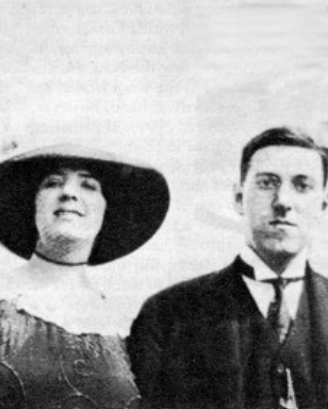
It is made to look like a couple’s photo, but this was taken only a few months after they met.
There are no photos of them from their marriage, which is very odd.
It takes some digging to find the original of the photo above, which reveals it’s not a couple’s photo at all:
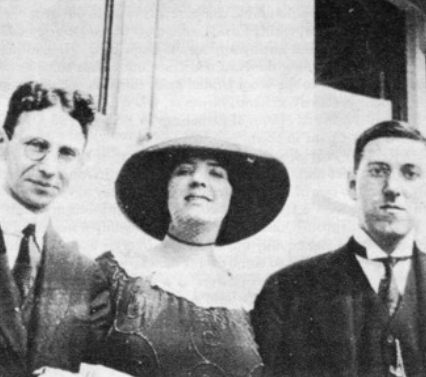
The way they’re positioned, Sonia and the man on the left look more like a couple than she and Lovecraft.
You’ll also notice the background of the first photo has been altered for some reason.
The man to the left is Reinhart Kleiner.
Rheinhart Kleiner | The H.P. Lovecraft Wiki | Fandom
That’s a Jewish name.
Again, why is anti-Semitic Lovecraft hanging around so many Jews?
There were several photos taken of Lovecraft on this day, including these with journalist William J. Dowdell:

Dowdell, William J. (en-academic.com)
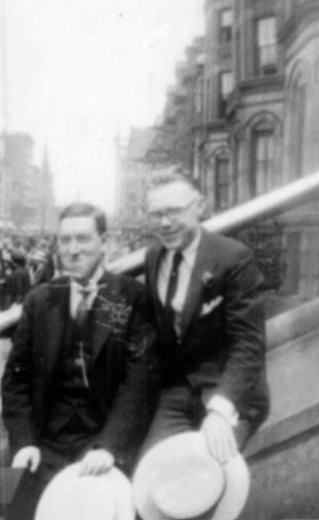
Now, those look more like couples’ photos, don’t they?
Miles:
the first pic of Lovecraft and his wife is fake.
Lovecraft has been pasted in.
His face is lit differently than the others, and his neck goes into his shirt in an unconvincing manner.
While I am here, let me point out something uncanny.
Note the name Dowdell.
If you think of yourself as a fan of mine, let me ask you if that name looks familiar.
It would be a good question in Mathis trivia.
You have seen it before.
Are you ready?
One of the first negative comments at Amazon on my first science book was by someone named Dowdall.
I accused him of posting under a fake name—a variation of “Doubt-all”—and I soon got an email informing it was her real name.
Here it is years later, and have we made another link?
Who knows?
As if we need it, here’s more confrmation the anti-Semite story is a farce.
Another of Lovecraft’s close friends was James Morton.
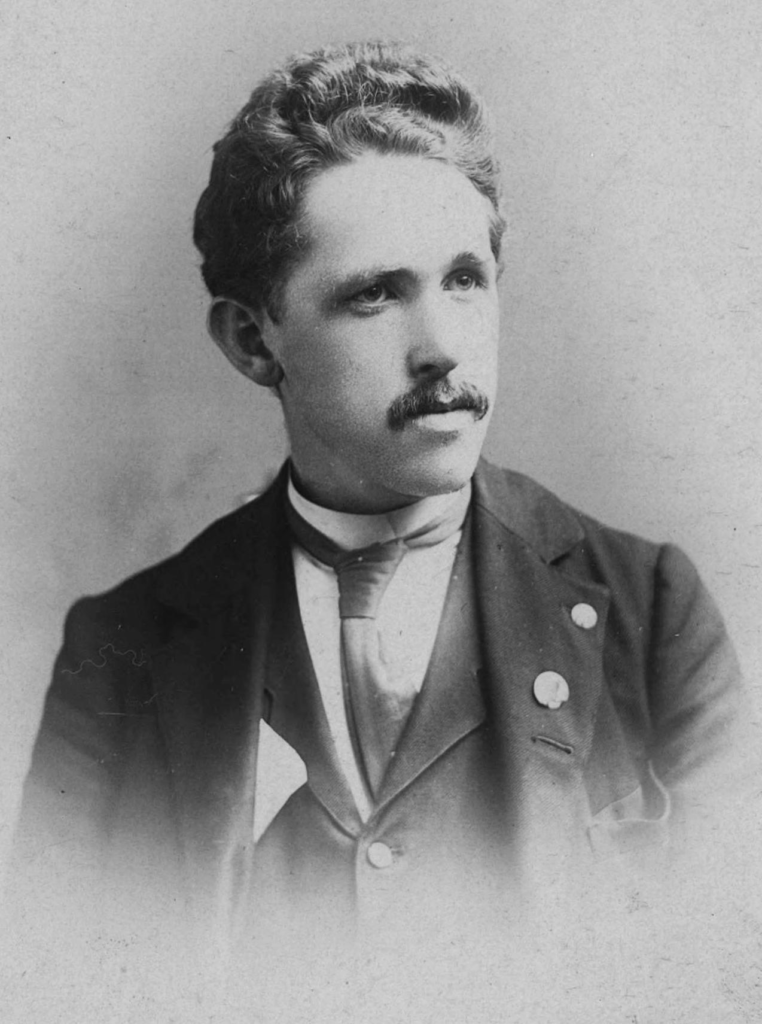
He was president of the Boston Theosophical Society in 1895.
Morton was outspokenly against racism, traveling the country to give lectures on such topics as racism against redheads and antisemitism in Russia.
The Jews Were the Ruling Caste of the USSR – Library of Rickandria
So why was he close friends with Lovecraft, an ardent racist?
Morton was a follower of Bahá’í, a fake religion created to discredit religion in general; Morton himself acknowledged he was an atheist, even while being a Bahá’í.
Satanic Information for Atheists & Other Skeptics – Library of Rickandria
Lovecraft was also a ghostwriter for Harry Houdini, a.k.a. Erik Weisz, a Jew and son of a Rabbi.
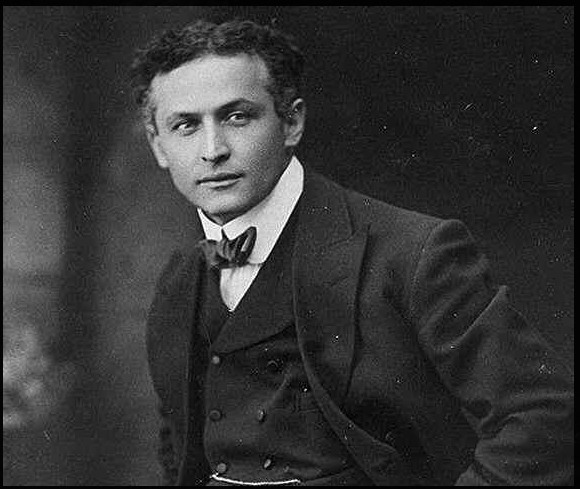
Another one of H.P.’s close friends, and the executor of his estate, was Robert Barlow.
Guess what?
He was also gay.
Were any of H.P.’s friends not gay?
Straight guys don’t have this many gay friends.
Lovecraft’s Friends and Acquaintances (hplovecraft.com)
And if they have any gay friends at all, they know they’re gay.
Are we supposed to believe H.P. didn’t know 90 percent of his friends were gay?
Robert Barlow was head of the Department of Anthropology at Mexico City College, where he taught William S. Burroughs.

Miles outed Burroughs as an Intelligence agent in his paper on the Beat generation, so it’s not surprising that the story of Burroughs being one of Barlow’s pupils makes no sense.
Burroughs moved to Mexico City in 1949 to escape his financial and legal woes, we are told.
But he decides to enroll in Mexico City College and take anthropology classes just for the fun of it?
From Theosophy to the Beat Generation or How even the Occult was Disguised – Library of Rickandria
If you were having financial troubles, would you waste the little money you had on anthropology classes at your local college?
Burroughs would’ve been 35 in 1949, much past the age of a typical college student.
Even stranger is that Burroughs was four years older than Barlow.
So, a 31-year-old Barlow became head of the Anthropology Department at Mexico City College and taught a 35- year-old Burroughs?
We are told Barlow also did important archaeological work in Mexico.
Archaeology has often been a front for Intelligence agents, so my guess is that both Burroughs and Barlow were both assigned to the same Intel project at this time.
For more proof, Barlow’s father was Lieutenant Colonel Everett Darius Barlow, and Robert spent much of his youth at Fort Benning, Georgia.
Wikipedia says financial troubles forced Barlow’s family to move around, including to places like:
- Kansas City
- DeLand (Orlando)
- Washington D.C.
These are all military hotbeds, home to several military bases and support offices.
Lt. Cl. Barlow was never discharged and never had financial troubles; he continued to work for the military and his son Robert was eventually recruited by Intelligence through his father’s connections.
Robert attended the Kansas City Art Institute, a spook school set up to destroy real art and writing by promoting fake art and writing.

One of its faculty members was Elaine de Kooning, wife of famous modern artist Willem de Kooning.

We aren’t told what Robert’s creative medium was, though he was later known as an “avant-garde poet.”
Avant-garde is just a fancy word for talentless.
Robert received a Rockefeller Foundation Fellowship in 1944 and a Guggenheim Fellowship in 1946—more proof of the same thing.
These fellowships have always funded and promoted fake:
- scholarship
- science
- art

That’s a photograph of Barlow with Lovecraft circa 1935.
Lovecraft (far left) would have been 45, and Barlow (second to left) would have been 17.
It’s more than a little creepy for a 45-yearold to be hanging out with a 17-year-old, don’t you think?
Especially since Barlow is a very young-looking 17-year-old.
He looks more like 14 in this picture.
It’s not like Lovecraft was Barlow’s mentor; they were close friends, and Lovecraft named Barlow the executor of his will.
Lovecraft died at 47, two years after this picture was taken, which means he chose a 19-year-old to be his executor.
Again, this makes no sense.
Lovecraft and Barlow’s entire relationship seems suspicious, especially since we know they were both gay.
Jewish Control of Gay Rights – Library of Rickandria
All that’s to say, within a few page clicks I’ve discovered that Lovecraft was a gay Jew pretending to be a straight anti-Semite.
What a surprise.
(Given Miles’ trio, we just have to now show he faked his death.)
Let’s hit on Lovecraft’s wife Sonia for a minute, as she is an interesting character in her own right.
She grew up in Liverpool, which is in Lancashire – land of Lovecraft’s Baron de Houghton ancestors.
There Sonia attended the Baron Maurice de Hirsch School, a school set up by the wealthy Jewish financier of the same name specifically for “the oppressed European Jewry.”
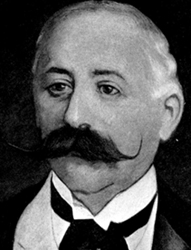
[Moritz Freiherr von Hirsch auf Gereuth (German: Moritz Freiherr von Hirsch auf Gereuth; French: Maurice, baron de Hirsch de Gereuth; 9 December 1831 – 21 April 1896), commonly known as Maurice de Hirsch, was a German Jewish financier and philanthropist who set up charitable foundations to promote Jewish education and improve the lot of oppressed European Jewry. He was the founder of the Jewish Colonization Association, which sponsored large-scale Jewish immigration to Argentina.]
Baron de Hirsch was also known for founding the Jewish Colonization Association on September 11, 1891.
Jewish Colonisation Association – Wikipedia
Its aim was to facilitate the mass emigration of Jews from Eastern Europe to agricultural lands purchased by Hirsch in:
- America
- Canada
- Argentina
and Brazil.
One settlement was in Ellington, Connecticut, about an hour and a half west of Providence.
Sonia moved to America in 1892, a year after the JCA was founded.
Sonia’s wiki page says:
“Greene was independently middle class, unusual for women of that time.”
It doesn’t bother explaining how she became independently middle class, or where she got the money to later bankroll several weird fiction and sci-fi fanzines.
It helps to know that her mother married a man named Samuel Morris in 1892, which is what prompted Sonia to finally move to the U.S. and live with her mom and new stepfather.
This Morris doesn’t appear in Sonia’s genealogy, which is itself a clue.
He was most likely a descendent of the Baronets Morris, specifically Robert Morris, crony capitalist and financier of the American Revolution who was originally from – yes, that’s right – Liverpool.
(See Miles’ paper on Ben Franklin for more on Morris.)
Benjamin Franklin: Premier American (British) Spook – Library of Rickandria
Morris is a very common Jewish first name, being an anglicization of Moritz.
In fact, we just saw one – Baron Maurice de Hirsch was really Moritz von Hirsch.
Also, I should point out that Lovecraft was also a Morse, which is a variant of Morris/Moritz.
So, Sonia was likely a cousin of Lovecraft, which is why they picked her to be his beard.
She may also have been related to Baron de Hirsch through her stepfather.
One last note on Sonia.
Her daughter from her first marriage was Carol Weld, who married John Weld.
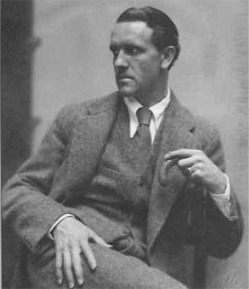
John was a reporter for the New York Herald Tribune, New York American, and New York World.
He also wrote screenplays for Columbia and Universal and was director of publications for Ford Motors.
So, he was a newspaperman, advertising mogul, and Hollywood writer.
That’s not suspicious at all.
John was friends with the likes of:
- William Randolph Hearst
- Clark Gable
- FDR
- Charlie Chaplin
and James Joyce.
Miles:
Also remember actress Tuesday Weld, from Looking for Mr. Goodbar and Once Upon a Time in America.
Her real name was Susan Ker Weld, again linking us to the Ker/Kerr family of the peerage we have seen many times.
She was also a Balfour and a Motley—which may tell us something about Motley Crue and its members, including of course Tommy Lee Bass.
We have found that Lee is often a fudge of Levy.
Back to Lovecraft’s genealogy.
Lovecraft is also related to Clemens/Clements.
These are the same Virginia Clements from which Mark Twain hails, their common ancestor being Captain John Francis Clements from Surry, Virginia.
Francis Clements, Sr. (c.1654 – 1714) – Genealogy (geni.com)
This makes Lovecraft and Twain, cousins several generations removed.
I’m apparently the first person to ever discover this connection.
(For context, consult Miles’ paper on Twain.)
What About Mark Twain? – Library of Rickandria
There’s another connection to Twain, as both Twain’s and Lovecraft’s ancestors include Rathbones.
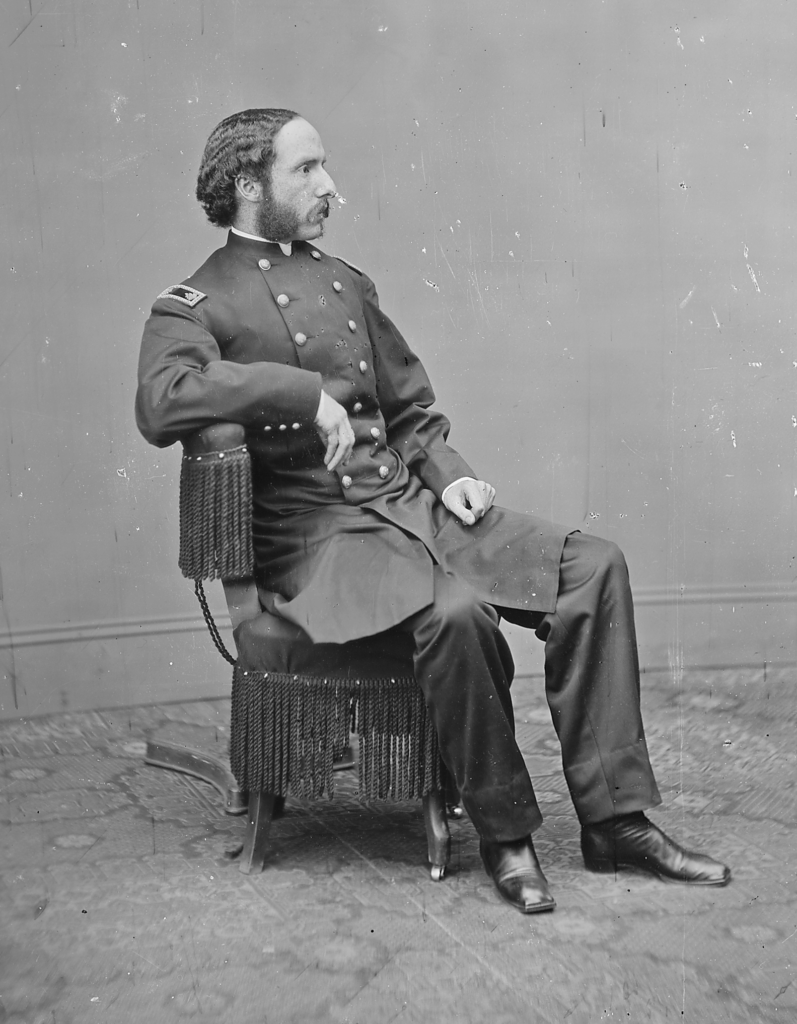
That name also links us to the fake Lincoln assassination – remember that Henry Reed Rathbone, a U.S. military officer, allegedly attempted to stop the fleeing John Wilkes Booth.
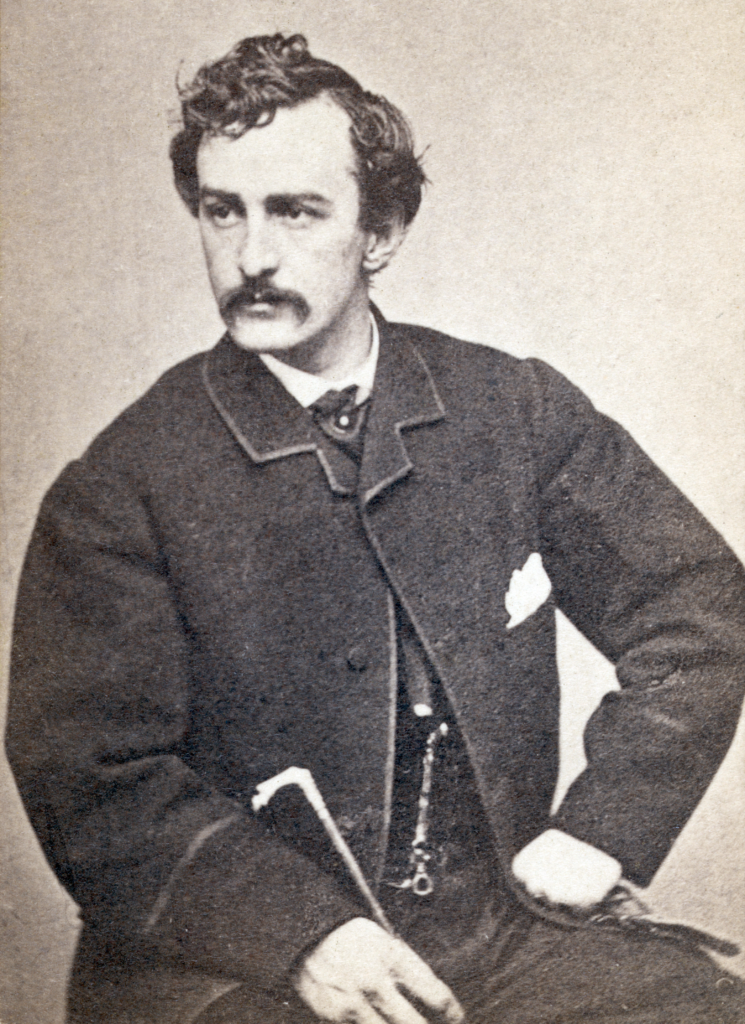
Lincoln’s Assassination was a Manufactured Event: Meaning it NEVER Happened – Library of Rickandria
Unfortunately for that story, Miles has shown Booth and Rathbone were closely related to Mary Todd Lincoln.
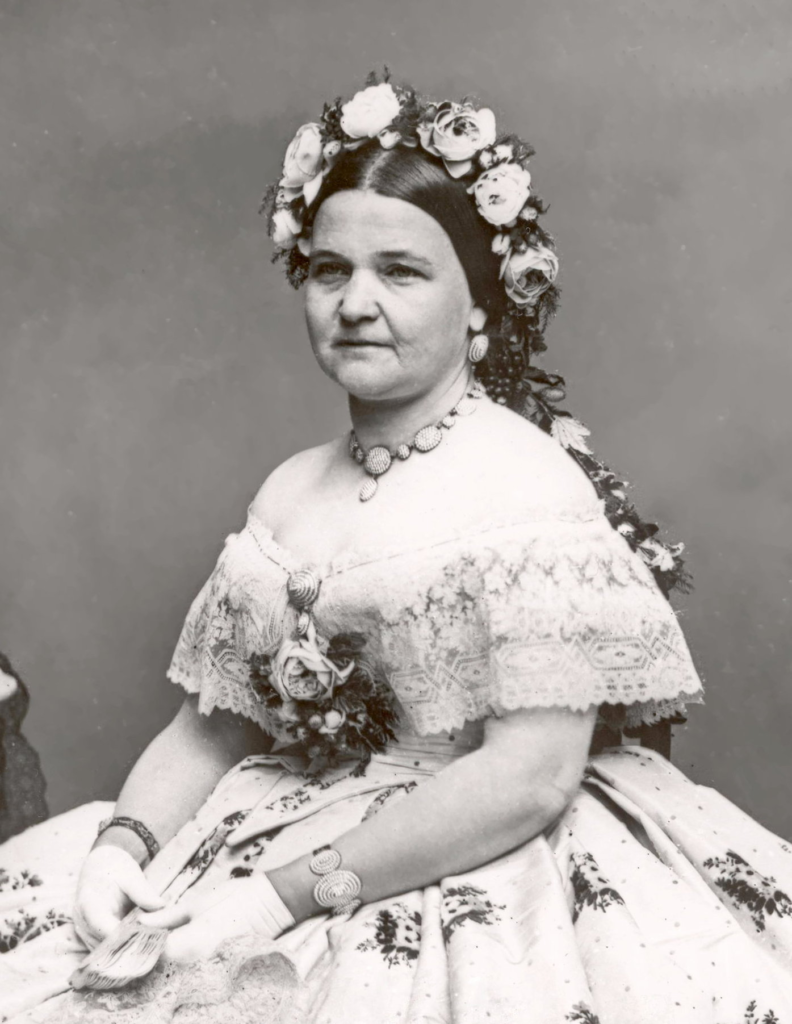
Lovecraft’s direct line goes back to a Sir Geoffrey Clements II from Oxfordshire, son of Jeremiah Clement and Agnes Webster Clement.
According to his geni.com page, he was a
“shareholder in the London Virginia Company, which colonized Jamestown, Virginia,”
to where he immigrated around 1610.
What was the London Virginia Company?
I’m glad you asked:
In 1606 Captain Bartholomew Gosnold obtained of King James I, a charter for two companies.
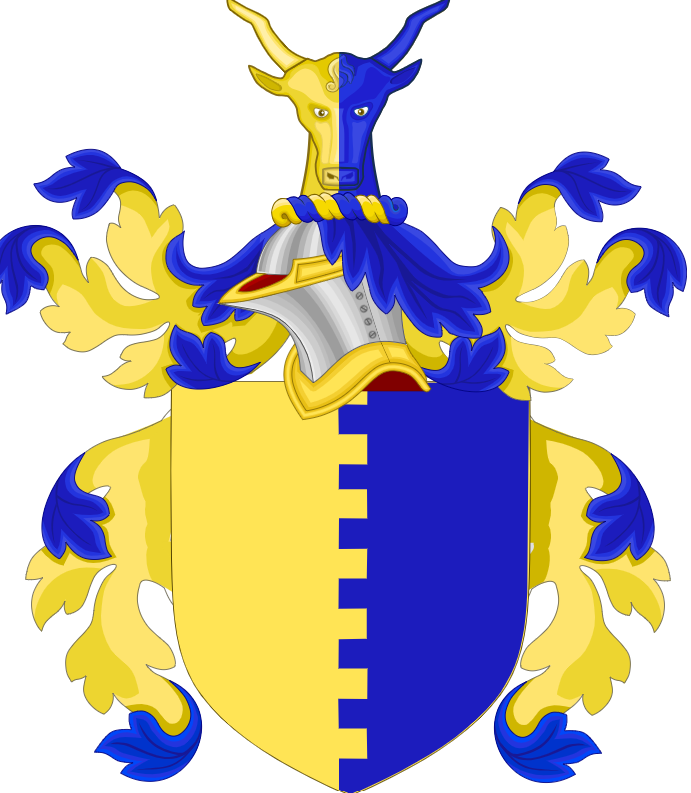
The first, for the South-Virginia or London Company, covered what are now:
- Maryland
- Virginia
- Carolina, between Latitude 34° and Latitude 41° North
Gosnold’s principal backers were:
- Sir Thomas Gates
- Sir George Somers
- Edward Wingfeld
and Richard Hakluyt.
The second Company, the Plymouth Adventurers, were empowered to settle as far as 45° North, encompassing what are present day:
- Pennsylvania
- New Jersey
- New York
and New England.
The Company paid all the costs of establishing each colony, and in return controlled all land and resources there, requiring all settlers to work for the Company.
The first leader of the Virginia Company in England was its treasurer, Sir Thomas Smythe, who arranged the 1609 charter.
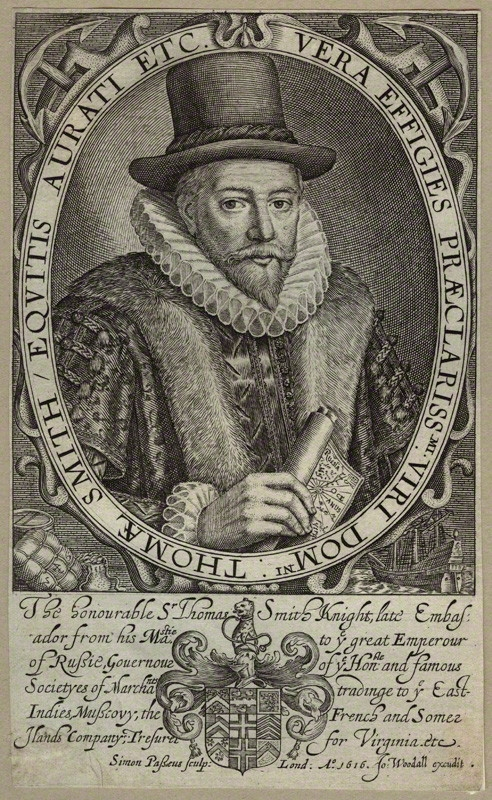
He had been governor of the East India Company since 1603 and continued with one break until 1620.
In an extensive publicity campaign, Wingfeld, Gosnold and a few others, circulated:
- pamphlets
- plays
- sermons
and broadsides throughout England to raise interest in New World investments.
Shareholders could buy stock individually or in groups.
Almost 1,700 people purchased shares, including men of different occupations and classes, wealthy women, and representatives of institutions such as:
- trade guilds
- towns
- cities
Investors, called “adventurers”, purchased shares of stock to help finance the costs of establishing overseas settlements.
I’ve never really studied the Virginia Company before now, and boy does it confirm a lot of suspicions.
Consider the implications of it – America’s first colony was not established for religious freedom or political liberty, nor was it established as an outpost of the English government.
It was a business, funded by a private, for-profit company with very wealthy shareholders (a single share cost half a year’s salary).
It wasn’t funded by the English government.
We are told it was eventually taken over by the English government, but most, if not all, European governments had already been taken over by the super-wealthy crypto-Jewish bankers and merchants by this time, who arranged for all important political offices to be filled with either their puppets or their own family members.
Defenders of capitalism want you scared of government taking control of private industry, but in reality, it is the industrialists who control government and have controlled it since at least the time of the London Virginia Company.
This is the very definition and model of fascism, operating under the guise of “free market” capitalism.
Capitalism is a Collapsing System – What’s Next? – Library of Rickandria
You’ll also notice the name Wingfeld.
Sir Gilbert Houghton’s brother-in-law was Sir Robert Wingfeld, whose great-great-grandson was the Edward Wingfeld mentioned above.
Edward would become the frst Colonial Governor of Virginia.
These Wingfelds were related to all the top English peers and royals, including:
- Woodvilles
- Earls Rivers
- Staffords
- Dukes of Buckingham
- Tudors
- Dukes of Bedford
- Sir Francis Knollys
and King Henry VII.
Remember that Lovecraft descends from the Barons Houghton, so he is related to all these people, including the Wingfelds.
But I suspect he is related much more closely than it appears.
Why? Because Lovecraft’s father’s name was Winfeld, which is just one letter short of Wingfeld.
Supporting this, we find that Winfeld Scott Lovecraft was named after General Winfeld Scott, whose ancestors were Wingfelds, thus proving Winfeld/Wingfeld is the same name.
These Wingfelds are from Virginia, so we can assume they’re the same Wingfelds we saw above.
They don’t tell us Winfeld Lovecraft and his namesake General Scott were related, but it’s highly unlikely his parents would name him after some war general they weren’t related to. [1]
This means H.P. Lovecraft is related to the Wingfeld peers through his mother and his father, which would make his parents cousins of some degree.
In any case, we’ve linked Lovecraft to the London Virginia Company twice, through the Clements and the Wingfeld lines. Lovecraft is also related to Mellons.
His aunt Mary married a Paul Mellon.
Mary Louisa Mellon (Lovecraft) (1855 – 1916) – Genealogy (geni.com)
In case you didn’t know, there’s a famous Paul Mellon, grandson of Thomas Mellon, founder of Mellon Bank.
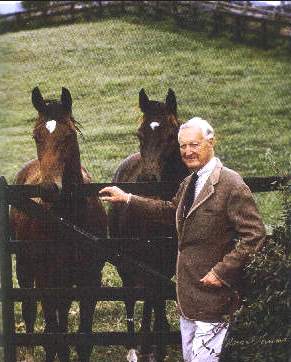
[Paul Mellon (June 11, 1907 – February 1, 1999) was an American philanthropist and an owner/breeder of thoroughbred racehorses.[1] He is one of only five people ever designated an “Exemplar of Racing” by the National Museum of Racing and Hall of Fame. He was co-heir to one of America’s greatest business fortunes, derived from the Mellon Bank created by his grandfather Thomas Mellon, his father Andrew W. Mellon, and his father’s brother Richard B. Mellon. In 1957, when Fortune prepared its first list of the wealthiest Americans, it estimated that Paul Mellon, his sister Ailsa Mellon Bruce, and his cousins Sarah Mellon and Richard King Mellon, were all among the richest eight people in the United States, with fortunes of between US$400 and 700 million each (around $4,300,000,000 and $7,600,000,000 in today’s dollars).]
The famous Paul also married a Mary, though her maiden name was Brown.
Mary Mellon (Conover) (b. – 1946) – Genealogy (geni.com)
The weird thing is that Lovecraft’s great-aunt was a Mary Brown.
Mary Brown (Lovecraft) (1828 – 1907) – Genealogy (geni.com)
The connection is being purposely obscured, but we may assume Lovecraft is closely related to the wealthy Mellon banking family.
Another interesting relative of H.P.’s is his uncle, Frederick Lovecraft.
Frederick’s wife’s sisters were Florence Salmons and Martha Chase.
It appears a book was recently written about him and his sordid life.
This is from the introduction to the book on Amazon:
When Frederick committed suicide in 1893, it caused a sensation, with wall-towall coverage in all of the major papers, including The New York Times.
His death triggered a pitched battle over his estate and revealed a secret romance with one of the most beautiful actresses in America (May Brooklyn), who took her life several months later.

After her death, a tragic story of:
- grief
- spiritualism
- obsession
with the supernatural was revealed.
It turns out Frederick was a prominent spiritualist, which we know from Miles’ papers was a fake movement promoted by the U.S. Government to delegitimize Christianity and religion in general.
Why is this important?
Because of one of Lovecraft’s close confidants was Clifford Martin “C.M.” Eddy, Jr.
Both he and Lovecraft were ghostwriters for Harry Houdini.
The name Eddy links him to Mary Baker Eddy, fake founder of the fake religion of Christian Science.
faithdeal.pdf (mileswmathis.com)
Also, to the Eddy brothers and the fake Theosophy project.
(Theosophy has come up once already – remember that Lovecraft’s close friend James Morton was president of the Boston Theosophical Society.)
From Theosophy to the Beat Generation or How even the Occult was Disguised – Library of Rickandria
In support of this, we find Lovecraft’s great-great-grandmother was Isabella Baker.
Baker, Isabella b. Abt 11 Jul 1774 d. 17 Sep 1855 Seekonk, RI: Our Family History (eddyfamily.com)
C.M. Eddy’s 3g-grandfather was Patience Phillips.
He is also related to:
- Bordens
- Hathaways
- Fullers
- Shermans
and Chases.
Remember Lovecraft was related to Chases.
So, Eddy and Lovecraft weren’t just friends, but relatives.
For the cherry on top, Mary Baker Eddy’s great aunt was a Sarah Clement, tying her to both Lovecraft and Mark Twain.
Sarah Clement (Baker) (1750 – d.) – Genealogy (geni.com)
It’s also interesting that C.M. Eddy was a ghostwriter for Harry Houdini, since Houdini was known as one of the chief debunkers of spiritualism.
[1] H.P. was a descendant of Thomas Hazard, one of the founders of Rhode Island. Another one of Thomas’ descendants was U.S. Navy Commodore Matthew C. Perry. It turns out Perry worked closely with General Winfeld Scott during the 1847 Siege of Veracruz, a key battle of the Mexican American War.
After this siege, the U.S. marched on and easily captured Mexico City, where Winfeld Scott became the military governor of the occupied city. H.P.’s father was named after General Scott. This means H.P. was probably related to the two key military leaders of the Mexican American War, yet one more odd fact about H.P. that mainstream research fails to tell you. This also presents an interesting connection between H.P. and his close gay friend and executor Robert Barlow, who was head of the Anthropology Department at Mexico City College in…Mexico City.
This is just further proof that the spiritualism/Theosophy project was being controlled from both sides.
The same families promoting it over here were debunking it over there.
Did you notice something else about Frederick Lovecraft?
There was a fierce battle over his estate, which means he died a very wealthy man.
But we are told H.P.’s family’s fortunes were all but gone by 1900.
Are we supposed to believe the Lovecrafts lost all this wealth in just a few years?
Rich families don’t lose all their money just because business dwindles, especially not when the economy at large is booming.
They have enough capital reserves that their income remains stable through investment dividends.
Again, the whole riches-to-rags story reads as farce.
The very earliest pictures we have of H.P., courtesy of the photo gallery at hplovecraft.com, show him dressed up like a girl.
In fact, the first four photographs of Lovecraft are of little girls.

As far as I know, there is no mention of H.P. undergoing a sex change at some point in his life.
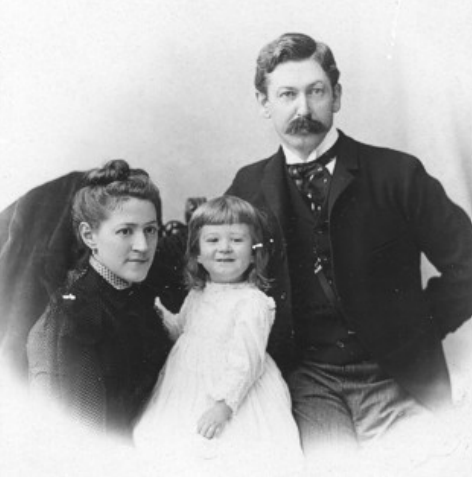
So why does this website tag this little girl as H.P.?
One of the photos clearly shows H.P.’s parents with him (her), but we are told H.P. was an only child.
So, who’s this little girl they are posing with?
We get an explanation at this website:
For several years, Sarah Lovecraft dressed her infant son as a proper Victorian girl in lace and curls, and when Winfield finally cut the boy’s hair she raged and wept.
H.P. Lovecraft (shawnnacol.com)
Miles:
that is an obvious lie, since both those children are female.
They also aren’t the same little girl.
That is two different girls.
Not only does the second girl have blonde hair while the first is a brunette, note the eyebrows.
Hair can look slightly different in different light, yes, but eyebrows don’t change like that.
Also remember that Lovecraft had a monstrously long face, with a fantastically long chin.
We don’t recognize him in these children at all.
A pretty child like that of either sex doesn’t grow up to look like Lovecraft.
Going back to the topic of Lovecraft’s “significance” in the sci-f and horror genres, we find another vein of research gold when we look into August Derleth, the man we are told was singlehandedly responsible for Lovecraft’s posthumous rise to fame.
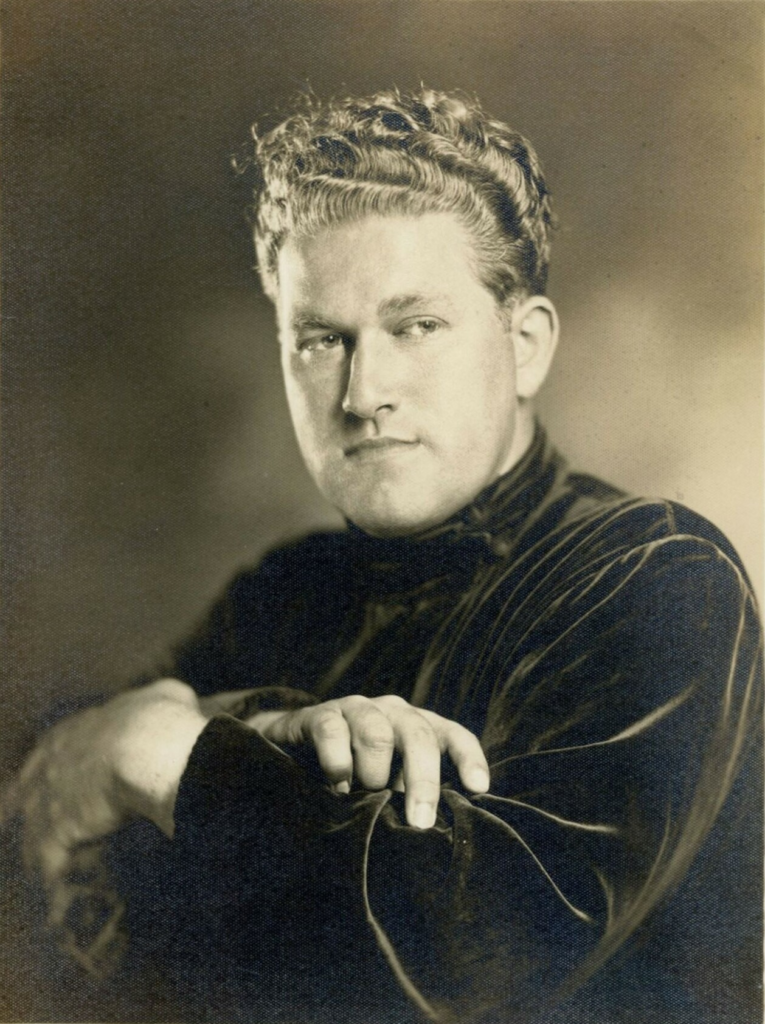
You’ve probably never heard of August Derleth, which raises a good question:
how did a man with no notoriety himself manage to catapult another obscure writer to fame?
To become famous, you usually must be promoted by someone who’s already famous, but Derleth – a weird fiction writer himself – had even less clout than Lovecraft.

So, the mainstream story makes little sense.
Global Media Control – Library of Rickandria
The puzzle comes together once we read that Derleth “collaborated” with a childhood friend, Mark Schorer, who later became Chairman of the UC Berkeley English Department.
Guess who else has ties to UC Berkeley?
Fellow sci-fi author Ursula K. Le Guin.

She and Phillip K. Dick both graduated from Berkeley High School in 1947, a.k.a. year one of the CIA.

[Philip Kindred Dick (December 16, 1928 – March 2, 1982), often referred to by his initials PKD, was an American science fiction writer and novelist. He wrote 44 novels and about 121 short stories, most of which appeared in science fiction magazines during his lifetime. His fiction explored varied philosophical and social questions such as the nature of reality, perception, human nature, and identity, and commonly featured characters struggling against elements such as alternate realities, illusory environments, monopolistic corporations, drug abuse, authoritarian governments, and altered states of consciousness. He is considered one of the most important figures in 20th century science fiction.]
Regular Miles readers will know that Berkeley is one of the top spook cities in America, with all sorts of Intel operations tying back to it.
It’s no surprise to find some of the biggest names in science fiction coming out of Berkeley, and it confirms my theory that science fiction as a whole was an Intel project from the outset.
Le Guin’s writing always strongly pushed the unscientific notion that gender is an oppressive social construct.
Dick was even more radical and unscientific, pushing the idea that there’s no way of knowing if the world is real or not.
Here is a photograph of August Derleth that caught my attention:

Derleth was apparently a voracious reader, and he is pictured here at his writing desk surrounded by part of his extensive library.
The most prominent, and one of the only discernable, books in this photo is Joseph in Egypt by Thomas Mann.
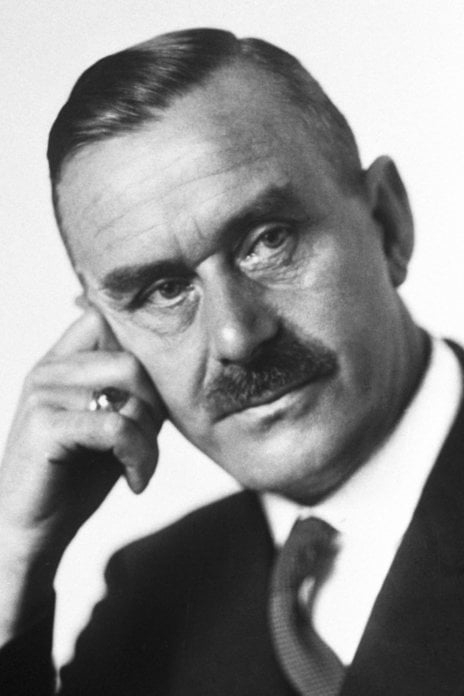
I don’t think this is unintentional.
The main purpose of this novel was to show how the monotheism of the Old Testament was a product of older Babylonian and Egyptian pagan religion and mythology and was derivative of them.
Exposing the Old Testament – Library of Rickandria
In other words, it was an attack on Judaism and Christianity.
Christian Program & Purpose – Library of Rickandria
But the key here is Mann himself.
He came from a wealthy, elite German-Jewish family of merchants.
His daughter Erika married W. H. Auden, one of the fascist modernist writers.
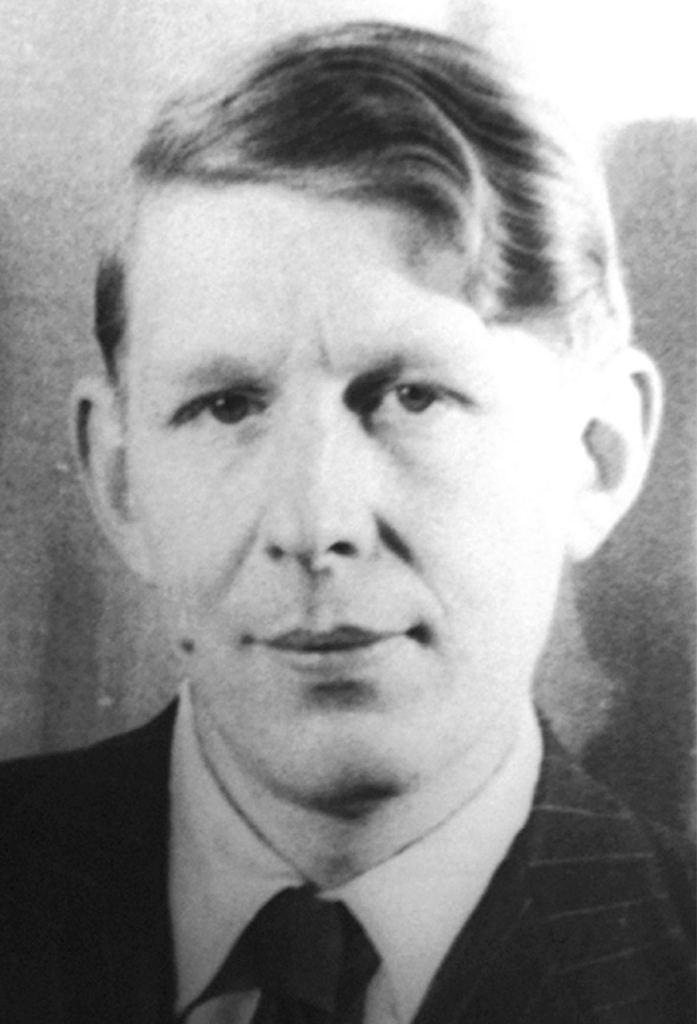
The Stolen Century – Library of Rickandria
The lead character in one of Mann’s novels, At the Prophet’s, is based on Ludwig Derleth, a German writer who died in 1948.

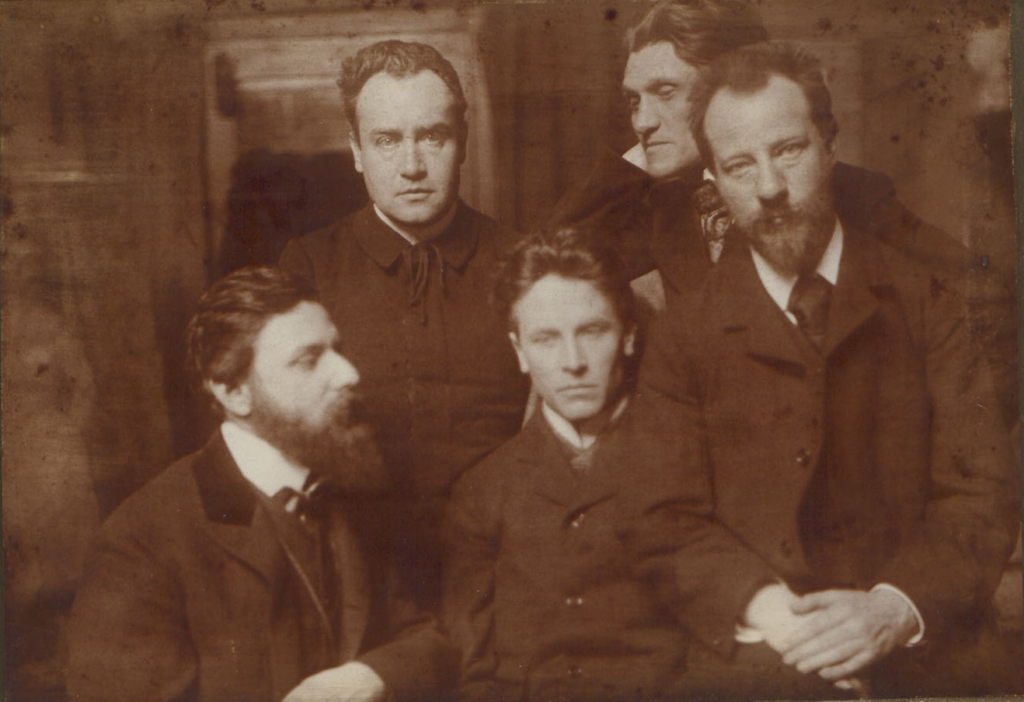
Ludwig was a member of the Munich Cosmic Circle, a group of writers who promoted the ideas of the mystic Alfred Schuler.
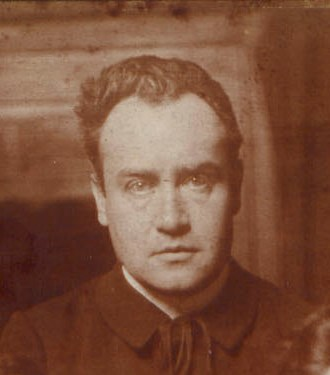
[Alfred Schuler (22 November 1865 – 8 April 1923) was a German classicist, esotericist, ceremonial magician, mystagogue, writer, poet, and independent scholar. He was a co-founder and central esoteric figure of the Munich Cosmic Circle, a prominent group of Munich-based writers and intellectuals. Furthermore, he was a notable influence to poet Stefan George and philosopher Ludwig Klages, of whom he was a life-long friend, as well as other members of the Circle. The majority of his literary output was not published until after his death.]
According to Wikipedia:
They developed a doctrine according to which the West was plagued by downfall and degeneration, caused by the rationalizing and demythologizing effects of Christianity.
A way out of this desolate state could, according to the “Cosmic” view, only be found by a return to pagan origins.
On Schuler’s wiki page, we learn that the Munich Cosmic Circle also believed that
“In the sign of the ‘Blood Beacon’ and the swastika, its incarnate emblem, a healthy state of life were to be regained.”
In fact, the swastika was a central symbol to Schuler’s mysticism and often used in the Munich Cosmic Circle’s publications.
We are told Schuler was an anti-Semite and, according to one theory, actually met with Adolf Hitler.
Yet one of the other leading figures of the Munich Cosmic Circle was Karl Wolfskehl, who was a Zionist Jew.
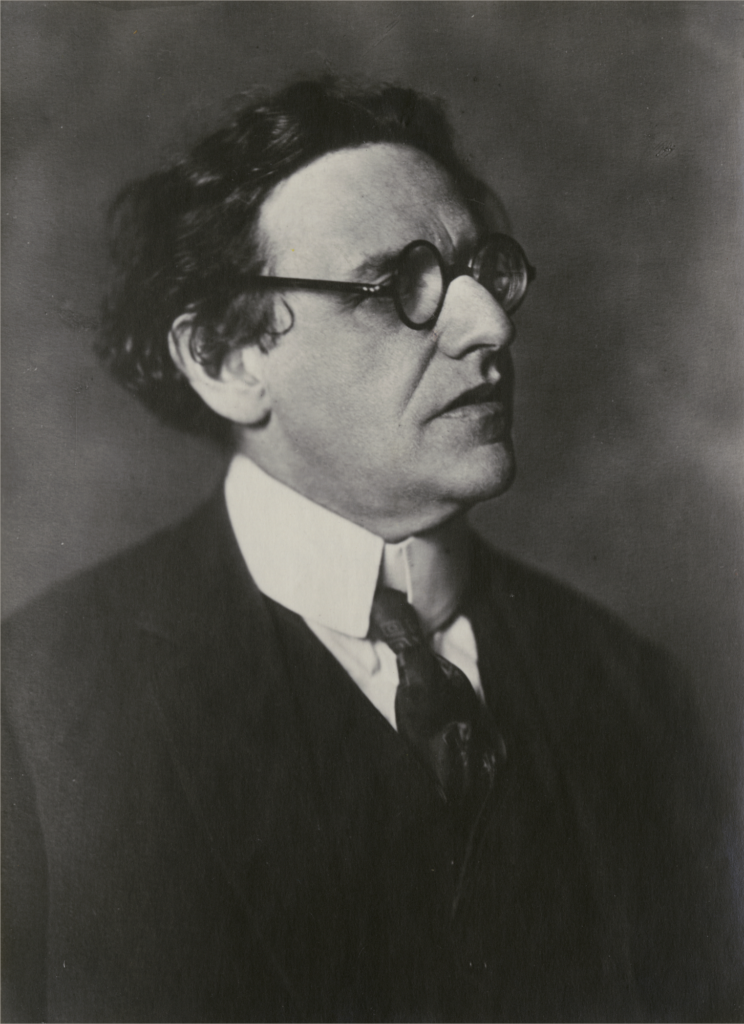
That makes no sense until you read Miles’ work on Hitler and World War II and realize that Hitler was himself Jewish and Nazism was the manufactured catalyst for the Zionist project’s goals.
The BEER HALL PUTSCH was Faked! – Library of Rickandria
The Munich Cosmic Circle is more evidence that Nazism and Zionism were two sides of the same coin, minted by the same ruling families.
More WWII Fakes – Library of Rickandria
The question remains whether August and Ludwig Derleth were related.
On fndagrave.com, we can trace August’s genealogy back to Derleths of Bavaria, Germany, from where Ludwig Derleth originated.
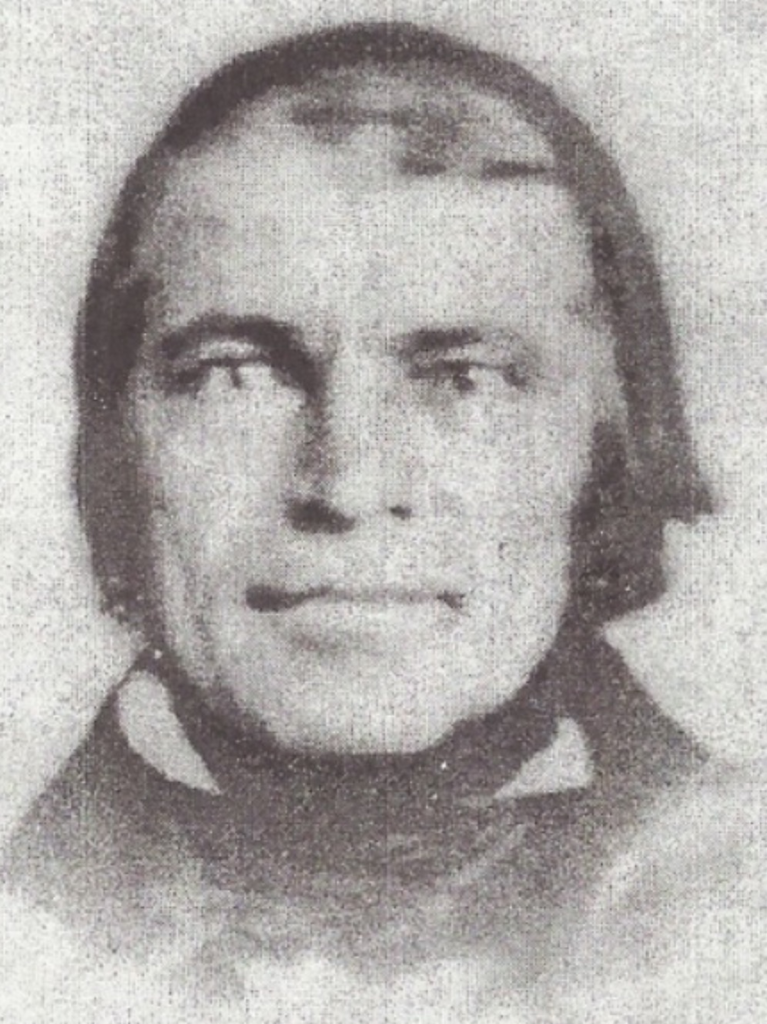
Michael Derleth (1812-1865) – Find a Grave Memorial
Seeing that Derleth is an exceedingly rare surname – less than 400 people in the world have it – we can presume they were relatives.
Derleth – Names Encyclopedia (namespedia.com)
Since both Derleths were writers promoting mystical, anti-religious ideas, it’s safe to say they were.
It would confirm my suspicion that the Thomas Mann novel conspicuously placed on August Derleth’s writing desk is no accident.
For a laugh, they’re giving you the dots and trusting you won’t connect them.
Now that I’ve outed Lovecraft, I’ll close with a few more comments on science fiction in general.
I’ve already said that the entire science fiction genre appears to be an Intel project.
It would take several more papers to thoroughly out all the major science fiction writers, but I can stone several birds at once with this photograph:
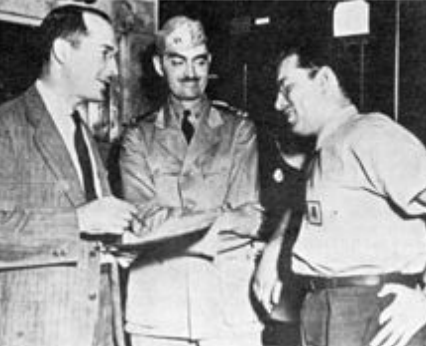
That’s:
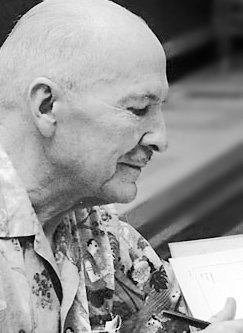
[Robert Anson Heinlein (/ˈhaɪnlaɪn/July 7, 1907 – May 8, 1988) was an American science fiction author, aeronautical engineer, and naval officer. Sometimes called the “dean of science fiction writers”, he was among the first to emphasize scientific accuracy in his fiction and was thus a pioneer of the subgenre of hard science fiction. His published works, both fiction and non-fiction, express admiration for competence and emphasize the value of critical thinking.[6] His plots often posed provocative situations which challenged conventional social mores. His work continues to have an influence on the science-fiction genre, and on modern culture more generally.]
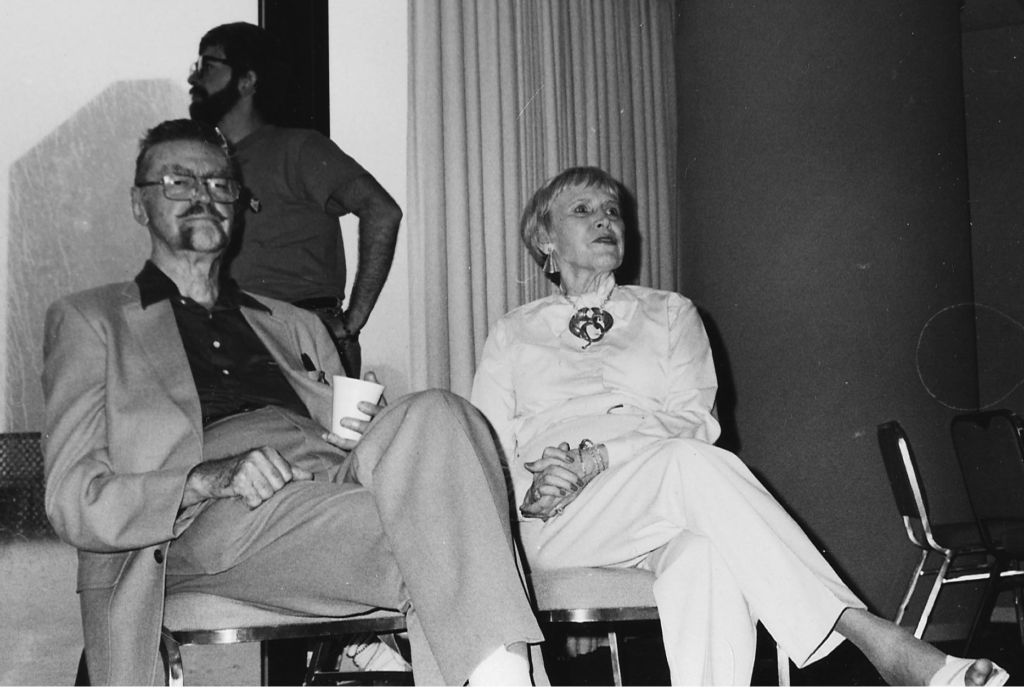
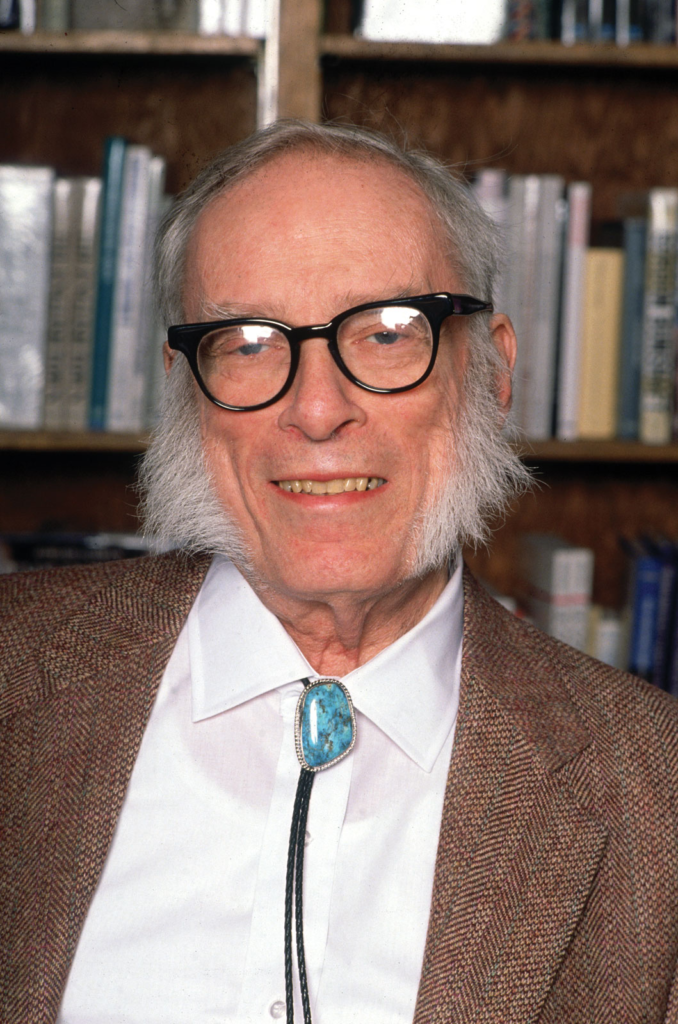
at the Philadelphia Navy Yard’s Naval Air Experimental Station in 1944.
Heinlein and Asimov, along with Arthur C. Clarke, are known as the “Big Three” of science fiction.
(Recall that Lovecraft was both a Lyons and a Clark.)
De Camp was also a noted sci-f author.
So, we immediately find three prominent sci-fi authors coming out of an “experimental” military unit.
Asimov, who was Jewish, was also later approached by DARPA to work on the U.S. missile protection project.
DARPA: Defense Advanced Research Projects Agency – Library of Rickandria
All three of the men pictured above were actual scientists.
De Camp went to the California Institute of Technology where his roommate was future sci-fi author and rocket fuel scientist John Drury Clark.

[ohn Drury Clark, Ph.D. (August 15, 1907 – July 6, 1988) was an American rocket fuel developer, chemist, and science fiction writer. He was instrumental in the revival of interest in Robert E. Howard’s Conan stories and influenced the writing careers of L. Sprague de Camp, Fletcher Pratt, and other authors.]
What are the odds that all these sci-fi writers knew each other before they all became famous writers?
Or that they were all in the military?
Or that they were all scientists?
We read on John Clark’s wiki page:
As a fan of the science fiction and fantasy magazines of the pulp era, Clark became friendly with several figures who were or would become authors in both fields, including:
- P. Schuyler Miller
- Fletcher Pratt
- L. Ron Hubbard
[Emphasis added] Hubbard also came out of the U.S. Navy and, of course, later became the founder of Scientology, another fake religion.
Amazing how many fake religions we’ve managed to pull into this one paper, isn’t it?
But notice the name Schuyler, which reminds us of the German mystic Alfred Schuler that we encountered earlier.
If you don’t know, the Schuylers were a prominent Dutch family in New York and New Jersey whose descendants include many famous U.S. businessmen and politicians, including the:
- Hamiltons
- Kennedys
- Roosevelts
and Bushes.
Schuyler family – Wikipedia
Across the pond, Arthur C. Clarke also came out of the military, having served in the Royal Air Force.

He later served on the Board of Governors of the National Space Society, a
“Space advocacy organization”
founded by Wernher von Braun.
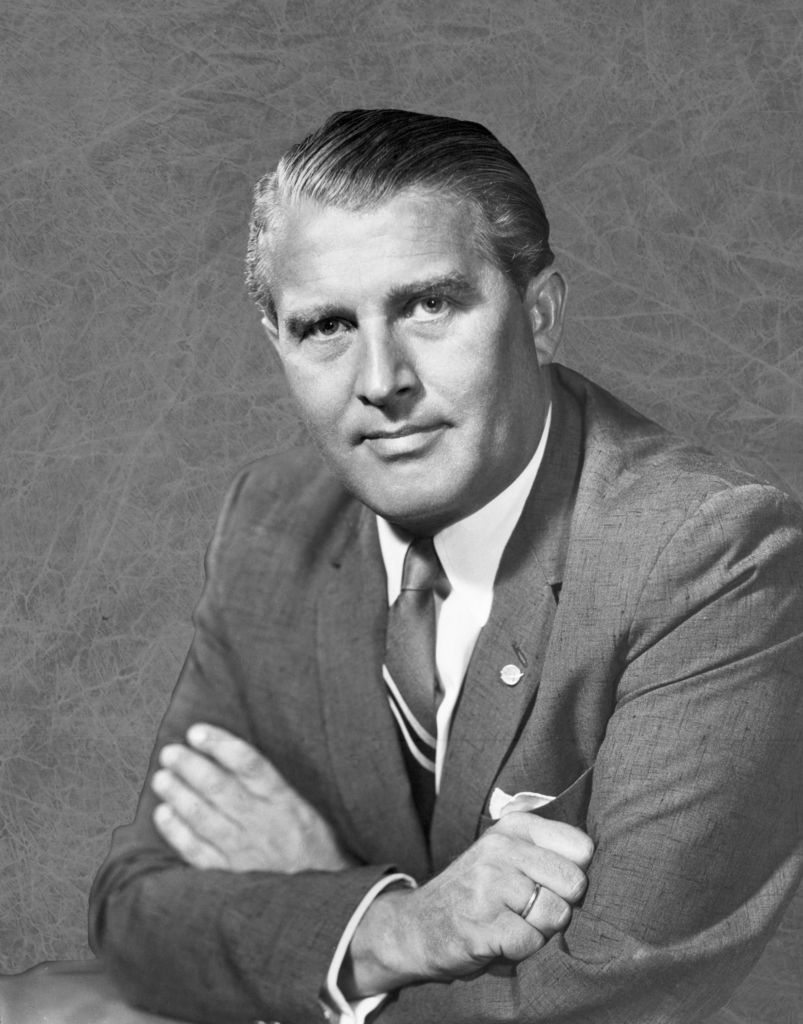
Von Braun was a Nazi aerospace engineer during WWII, but like many Nazi scientists, he also worked for U.S. Intelligence, helping to develop the intermediate-range ballistic missile for the U.S. Army and later working for NASA.
It is now admitted that Clarke was gay.
Jewish Control of Gay Rights – Library of Rickandria
Taken all together, we start to get a clearer picture of what was really going on behind the golden age of science fiction.
Many (or all) of its leading figures were gay, Jewish, or both, and it was closely tied to:
1) fake religions
2) Zionism/Nazism
3) the military/Intelligence complex
In this light, we get the strong impression that sci-fi was just an offshoot of several other projects of the 20th century, the collective goal being the complete takeover and destruction of:
- art
- literature
- science
by the industrialists.
Does this mean you can’t enjoy science fiction?
Not at all, and even I can admit there is some well-written sci-fi out there.
But like most things written in the past century, you should read it with your eyes wide open.
The Stolen Century – Library of Rickandria
The bulk of it is a waste of time, anyway, and that goes for all the newer stuff, as well.
I just finished reading The Three-Body Problem by Liu Cixin, which won the 2014 Nebula and 2015 Hugo awards.

[Liu Cixin (Chinese: 刘慈欣; pinyin: Liú Cíxīn, pronounced [ljǒʊ tsʰɨ̌ɕín]; born 23 June 1963) is a Chinese computer engineer and science fiction writer. He is a nine-time winner of China’s Galaxy Award and has also received the 2015 Hugo Award for his novel The Three-Body Problem as well as the 2017 Locus Award for Death’s End. He is also a winner of the Chinese Nebula Award. In English translations of his works, his name is given as Cixin Liu. He is a member of China Science Writers Association and the vice president of Shanxi Writers Association.[3] He is sometimes called “Da Liu” (“Big Liu”) by his fellow science fiction writers in China.]
With such high acclaim, you’d expect to find something worthwhile there.
But no, like all:
- art
- literature
- film
that is heavily promoted these days, The Three-Body Problem is utter garbage.
At least during sci-f’s golden age there were interesting character sketches and descriptions of other planets and cultures that told us something about our own human experience.
The Three-Body Problem has none of that – it’s just bald-faced agitprop pushing inane projects and ideas like quantum entanglement, particle accelerators, the existence of aliens, the total equality of animals and plants to humans (“Pan-Species Communism”), and the evil of all “human-centric” religions like Christianity.
Exposing Christianity – Library of Rickandria
The hand is tipped to the reader when one of the characters describes the strategy of the Earth-Trisolaris Organization (ETO):
Everything that’s happening is coordinated by someone behind the scenes with one goal:
to completely ruin scientific research….
The main goal is to misdirect your thoughts until you’re even more foolish than ordinary people.
Lest you think the ETO are the villains, they’re not.
They’re supposed to be the good guys.
They’re the ones attempting to destroy real science and confuse the masses to accomplish their goal.
The author spends most of the postscript talking about his actual belief in aliens and that:
“we should be ever vigilant”
about an impending invasion.
The Truth About Extraterrestrials – Library of Rickandria
Perhaps the DoD is trying to dip a little bit deeper into the public coffers for a new department?
They could call it the Department of Extraterrestrial Defense, or DED for short.
Liu again tips his hand – that is, the hand of the entire sci-fi genre – when he writes:
The wonder of science fiction is that it can, when given certain hypothetical world settings, turn what in our reality is evil and dark into what is righteous and bright, and vice versa.
Liu sees this as a good thing.
How is that a good thing?
All stable societies that value human life and freedom must have a clear, fixed, and shared understanding of right and wrong.
That shared understanding is accomplished, among other things, through art, storytelling, and a scientific grasp of the natural order.
That sort of stable moral and scientific foundation is exactly what the crypto rulers want to destroy, because it hurts their profits.
An unstable, confused, and divided society generates far more profit.
The Black Monday Murders (2016-2018) – Library of Rickandria
Miles:
Also remember that I have recently made the connection between Liu and Lee.
Cixin Liu is likely related to Lucy Liu, and they are both probably Lees/Leighs, with just a Chinese spelling.
Also remember that Lee = Levy.
So that should be Lucy Levy and Levy Cixin.
Get it now?
David and Leaf didn’t get around to proving Lovecraft faked his death, but we may assume it just on statistical grounds.
We also get some numerology.
He allegedly died on March 15, which is the Ides of March.
Same day Caesar allegedly died.
What used to happen on the Ides of March in Rome?
Jupiter’s high priest led the Ides sheep along the sacred road to the citadel, where it was ritually sacrificed.
I think you can see the ties yourself.
Lovecraft also died at age 46, one of Intel’s favorite numbers.
Another clue is this at Wiki:
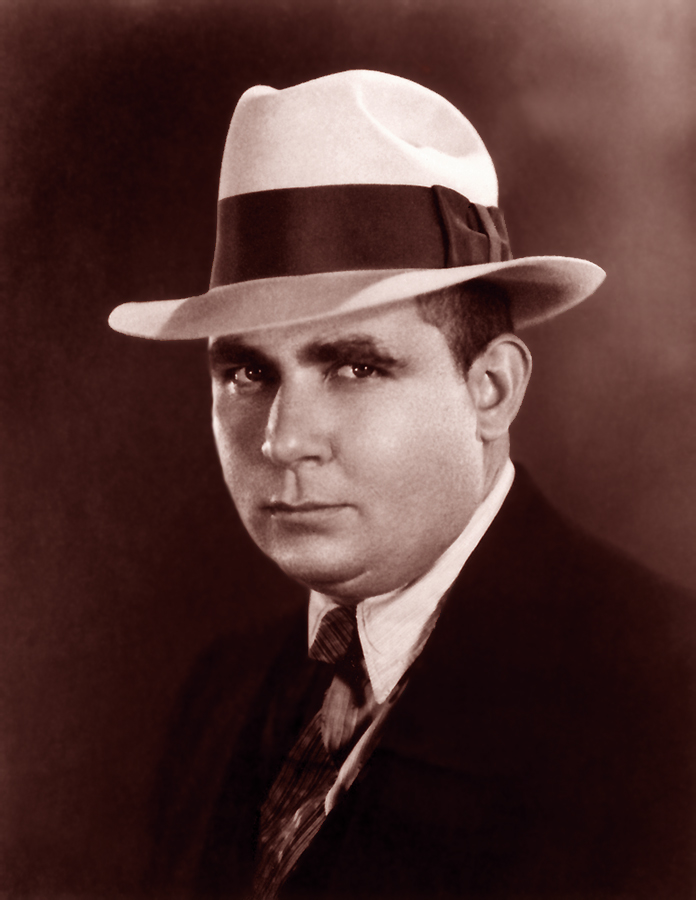
By 1957 Floyd C. Gale of Galaxy Science Fiction said that:
“like R. E. Howard, Lovecraft seemingly goes on forever; the two decades since their death are as nothing.
In any event, they appear more prolific than ever.
What with:
avidly rooting out every scrap of their writings and expanding them into novels, there may never be an end to their posthumous careers”
It was almost as if he never died.
The spook writers never die they are just ghosted by newer committees.
And, as with F. Scott Fitzgerald, we may assume they will keep finding new manuscripts whenever it is necessary.
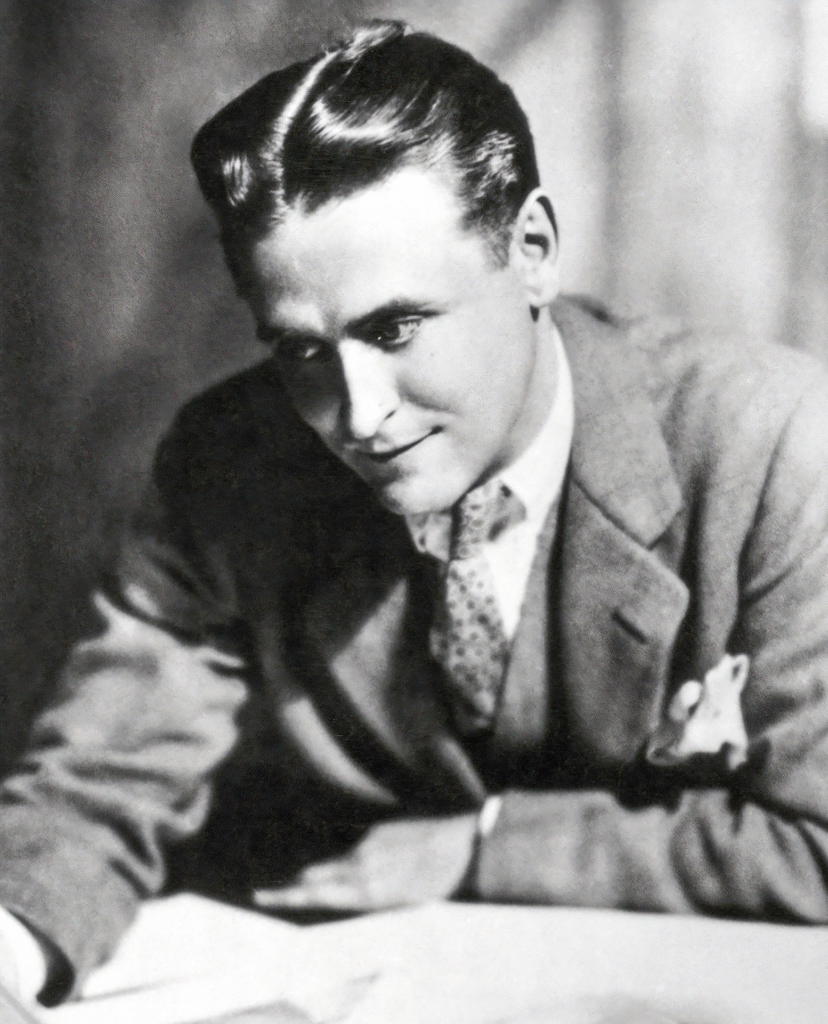
F. Scott Fitzgerald: Spook Baby – Library of Rickandria
These famous writers apparently spend half their time squirreling away hidden manuscripts in libraries like:
- Yale
- Harvard
- Oxford
or Berkeley, which you have to admit is convenient.
The Stolen Century – Library of Rickandria
While I am here, I encourage you to notice the astonishing length of Lovecraft’s Wiki page.
It is nearly endless, with 184 footnotes and 18 further reading links.
Shakespeare’s page isn’t that long.
Shakespeare: Intel Project – Library of Rickandria
Shakespeare’s page has more footnotes, but far fewer total words.
Only 1/3rd of Lovecraft’s page is biographical:
fully 2/3rds is composed of sections on:
- Appreciation
- Themes
- Influences
- Collections
- Copyright
and so on.
The page is like a college course in Lovecraft idolatry and trivia.
Despite the length of the page, it still contains big holes, the biggest of which may be a gap of seven years—from 1926 to 1933.
Anyway, someone is trying very hard to sell you Lovecraft as an important and interesting writer and person—which he wasn’t.
He was one of the most obvious spooks of all time—right up there with Crowley and Gardner.
Gerald Gardner: Witch, Amateur Archaeologist & Intelligence Asset? – Library of Rickandria
So, in future, if anyone starts talking to you seriously about Lovecraft, walk quickly the other way and don’t look back: you have just encountered either a spook or a ninny.
And probably the former.
